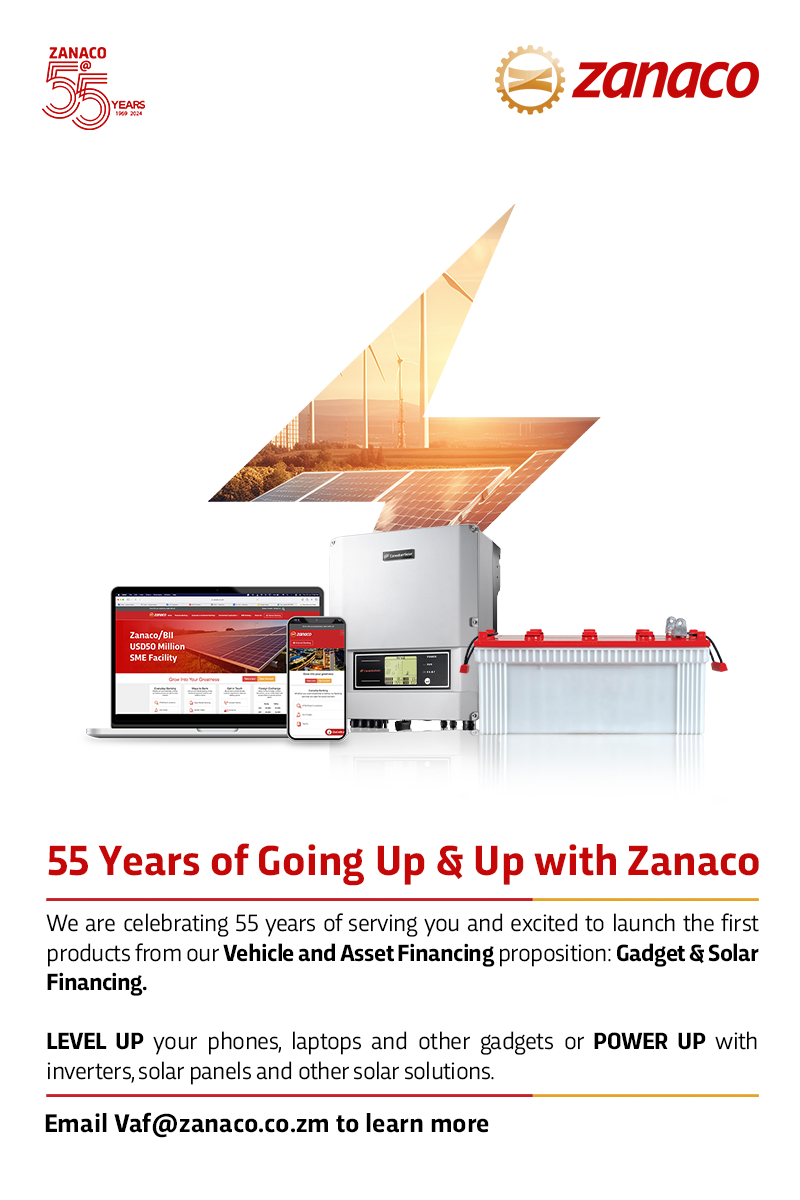Introduction
On 22 December the ZCCM-IH gave further details concerning the Strategic Equity Partnership (“SEP”) with International Resources Holding RSC Limited (“IRH”) for Mopani Copper Mines.
The four notable highlights include: new capital injection; increased ZCCM-IH shareholding; loans to repay the Glencore loan and; that there would be no labour retrenchments.
The total consideration is US$1.1 billion split between equity and debt as follows: US$620 million in new equity in return for a 51% stake in MCM, which will be used for MCM’s capital projects, and to stabilise the working capital position of the business; US$300 million as a shareholder loan by way of novation of part of the Glencore Transaction Debt; Up to US$100 million for settlement of the Glencore procured letters of credit; Up to US$80 million in shareholder loans, if required
This article raises the following three questions about this deal: What does the new capital mean? Does the new funds improve ZCCM-IH debt portfolio? Does the deal satisfy the growing calls for increased shareholding?
What the new capital means
At the time of its renationalization in 2021, Mopani needed about US$ 300 million to complete the capital projects.
This would have helped the company to increase production from around 80,000 tonnes to over 200,000 tonnes.
This level of production would have pushed Mopani, which made a net loss of US$ 91 million 2021 to profitability making it able to repay the Glencore debt.
The new dawn government neglected to inject this capital in the company, even refusing to offer Mopani millions of dollars, it is owed by the Zambia Revenue Authority through VAT refunds.
Similarly, despite Glencore being the most likely beneficiary of a profitable Mopani, it also refused to inject this capital. Instead, Glencore advanced Mopani US$100 million as credit.
Clearly, Glencore was ready to perpetuate its tight control over Mopani for the US$1.5 billion-plus-interest, plus the US$100 million-plus-interest. In short, Glencore’s plan was to hold Mopani under siege.
Mopani losses undermined its ability to meet its obligations towards its contractors, who in turn started closing down and sending their workers on forced leave or retrenching them. The resulting crisis left many families in poverty and severe financial crises.
Remember, the over 5000 contract workers who lost their jobs during the COVID-19 pandemic when Mopani cancelled the contracts of their employers have not been re-employed.
The injection of new capital thus breathes new life into the company.
One hopes that the resulting profit that this new capital entails is likely to improve Company’s profitability and ability to repay the Glencore debt. Equally progressive is the assurance that there would be no retrenchments.
Having been paid their retrenchment packages up to 2021, under the reckless deal signed during the PF, any new retrenchments sends these workers into poverty. Because Banks are allowed to recover their loans from the retrenchment packages, any retrenchments would spell doom for most families.
Does the new funds improve ZCCM-IH debt portfolio?
The new Mopani deal does not in any way improve ZCCM-IH debt portfolio. In fact over 40 percent of the total investment will go towards repayment of the Glencore debt.
The new company (IRH), will give over US$400 million to ZCCM-IH for it to make a partial repayment of its Glencore debt.
The new company has agreed to take only 51 percent shares, enough to give it controlling power over sales and key decisions and left 49 percent to ZCCM-IH. However, it is not taking over ZCCM-IH’s debt to Glencore.
What this means is that ZCCM-IH increased shareholding enables it to repay its Glencore debt if things go well. It does not mean that the profits would now come to Zambians.
Remember the Glencore deal stipulated as follows: Mopani owed Glencore group creditors US$1.5 billion of debt under the following terms:
1. interest to be capitalised for the first three years after completion, and thereafter payable quarterly at LIBOR + 3% (subject to a switch to an equivalent interest rate based on SOFR);
2. principal outstanding repayable under a dual mechanism:•3% of gross revenue of the Mopani group from 2021-2023 (inclusive), and 10-17.5% of gross revenue of the Mopani group thereafter; and
3. About 33.3% of EBITDA less tax, changes in working capital, capital expenditure, royalty payments and interest and principal (calculated under the first mechanism) payments in respect of Transaction Debt.
4. Repayment of principal (together with accrued interest) may additionally be required in the event of an occurrence of certain other early prepayment events, including certain change of control events in respect of Mopani.
5. After completion of the sale, Glencore will retain offtake rights in respect of Mopani’s copper production until the Transaction Debt has been repaid in full.
These conditions are super exploitative. The new investor is offering loans to ZCCM IH Plc to repay Glencore. The details of both loans are not disclosed. The new Mopani deal provides no details about this deal. If the status quo remains, this agreement is yet another disaster.
It would mean increased shareholding with zero-benefits to Zambians and 100 percent benefits to Glencore. We need details about how this deal was resolved, including full disclosure of the key terms and conditions. In short, while the new deal brings in new funds, it sustains or even deepens ZCCM-IH’s debt crisis.
Does the deal satisfy the growing calls for increased shareholding?
Given the effortless and seemingly senseless way the government recklessly handed out Konkola to Vedanta, 49 percent shareholding in Mopani sounds reasonable.
However, as I argued above, if the terms of the Glencore deal remain as they have been, this increased shareholding means nothing. Also, we need further details regarding the conditions offered to these companies e.g.
in terms of taxes especially that the so-called new dawn government is well known for being unnecessarily too generous to the mining companies. We also need to know how the government deals with illicit financial flows associated with mining capital.
A War on Want Report in 2015 for example, revealed that Zambia loses up to $3 billion a year due to tax avoidance and tax evasion by multinationals.
At the heart of these illicit dealings is Vedanta, the company which the government recently handed KCM back, and Glencore.
In 2014 an arbitration hearing in the London High Court of Justice revealed how Vedanta used a Dubai based subsidiary called Fujairah Gold to buy under-valued copper from its subsidiary KCM, and hide its profits, in a scam known as transfer mispricing. Fujairah Gold is a subsidiary, controlled by several other Vedanta subsidiaries and managed by Anil’s son Agnivesh Agarwal.
In 2020, the Supreme Court of Zambia fined Mopani Copper Mines and its Swiss parent company Glencoe $13 million for tax evasion, in particular for violating the Arm’s Length Standards (ALS), in which a buyer and seller are expected to act independently without one party influencing the other.
Similarly, First Quantum Minerals (FQM) Zambia sells all of its copper to FQM’s Swiss trading company, Metal Corp Trading to sell on the global market and in turn carries out sophisticated derivatives management to handle price risk’.
Although Metal Corp Trading has a brass plaque and a letter box in Zug, its main business is carried out through offices in London’s Great Portland Street housed in the same building as First Quantum Minerals Ltd UK headquarters.
In view of this, the Zambian government needs to be clear about how to combat these illicit flaws, because this is typical of all mining companies.
Conclusion
The key basis of the current deal is the original deal. Increasing shares, bringing new capital without addressing the flaws in the original deal left by the PF does not improve the situation. This deal illustrates one of the recurring issues in Africa, how to maximise benefits for its people.
Mineral dependent states have a tendency to fail to harness their resources for national development and even to be harmed by them in many cases. In these countries, living conditions are close to or below the average for sub-Saharan African countries.
While mineral booms promote bursts of temporary headline economic growth the after effects are so deep and so negative that in the long term growth is often lower than it would have been without the resource.
In this instance, resource dependence becomes not only a curse in terms of economic growth but also in terms of risks of violent conflict, greater inequality, less democracy and more corruption.
There is a need in the present instance for more clarity on the Mopani deal. Otherwise, it is not good enough.
WARNING! All rights reserved. This material, and other digital content on this website, may not be reproduced, published, broadcast, rewritten or redistributed in whole or in part without prior express permission from ZAMBIA MONITOR.













Comments